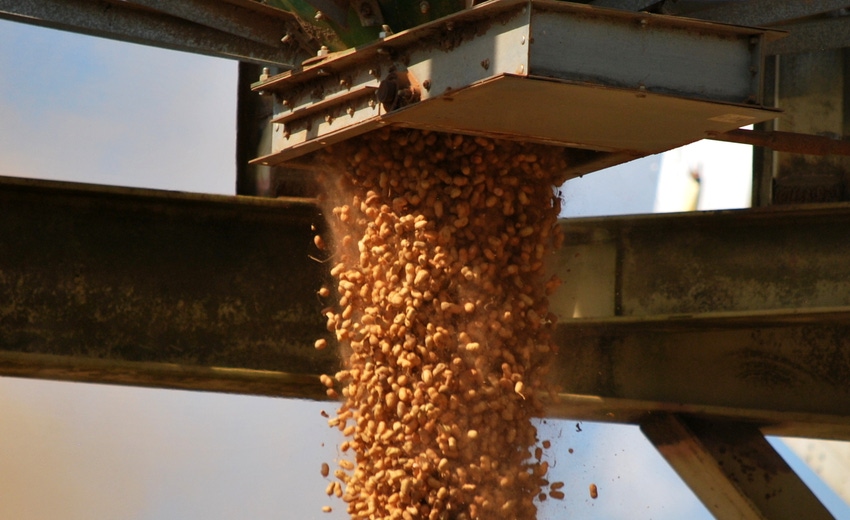
U.S. peanut producers in 2017 proved again they can grow high-quality peanuts — a lot of them. The supply pipeline is stuffed more than ever before, and the market beckons fewer acres and peanuts for 2018.
To get a foundational grasp on the market right now, Marshall Lamb highlighted a few numbers in a late-January interview with Southeast Farm Press.
In 2017, U.S. peanut farmers:
Harvested 1.829 million acres of peanuts, the highest since 1991, which was year following a devastating drought.
Yielded an average of 4,176 pounds per acre, the second highest only slightly less than the record-of-record yield set in 2012.
Produced a total of 3.52 million tons of farmer stock peanuts, the highest ever produced in a season based on data going back as far as 1909. And the 2017 crop is good quality.
Demand and consumption of U.S. peanuts, including domestic consumption and exports, remains strong. The U.S. peanut market will carry out from the 2017 crop and into the 2018 season an oversupply of about 1.28 million farmer stock tons, one of the largest carry out supplies ever, said Lamb, peanut economist and researcher leader at the USDA National Peanut Lab in Dawson, Ga., who annually provides a peanut market outlook and presentation for several growers’ groups and organizations across the peanut belt.
“We are oversupplied; there’s no doubt about it. And to a degree it almost could have been predicted. This time last year, we were coming off the 2016 crop, which wasn’t that good, and contracts (for 2017 crop) were in that $450 to $500 range. And cotton, corn and all the other (commodity) prices were pitiful. So we ended up planting more peanuts because it was the only decent economic alternative,” Lamb said.
U.S. farmers need to cut back on peanut acres in 2018, if not “we’ll be in this same position a year from now,” he said. “And we need to cut back on acreage to get our (crop) rotations back in order.”
There is no hard data, but anectodical evidence and comments by peanut Extension specialists, coupled with the higher-than-typical peanut acreage over the last three years, it is clear peanut rotations have been shortened and compromised in some locations in the peanut belt.
“Right now, the peanut market is extremely quiet. Some contracts for the 2018 crop have been offered but the quantity available for contracting is limited,” he said.
Cotton Woos
Lamb pointed out that Dec’18 cotton as of mid-January was trading at 76 cents per pound or higher, much better than this time last year. Cotton is peanuts primary and favorite rotation partner in the heavy production areas of the U.S. peanut belt. Though peanuts were the best (and maybe only bet) the last two seasons to make a profit, better cotton prices will grab some peanut farmers’ attention and woo more acres back into cotton for economic and crop-rotation production reasons.
Speaking at the Southern Cotton Growers and Southeastern Cotton Ginners Association in Myrtle Beach, S.C., Jan.19, Joe Nicosia, senior head of cotton and merchandising platforms at Louis Dreyfus Company in Memphis, predicted U.S. cotton acreage to expand to 12.5 to 13 million acres in 2018 due in part to more favorable prices compared to other crops.
Lamb ran various yield and acreage combinations to estimate potential peanut carryout from the 2018 crop into the 2019 crop.
For example, if U.S. peanut farmers harvest 1.5 million acres in 2018 with an average yield 3,750 pounds per acre, the 2018 carryout could be 1.28 million farmer stock tons. That same acreage with a 4,250 pound per acre average would push the carryout to about 1.6 million tons. Both scenarios would oversupply the market again and depress prices for 2019.
But if 1.25 million acres are harvested in 2018 with the 3,750-pound average, the carryout lowers to 788,000 tons; at a two-ton per acre average with that acreage the carryout moves to 945,000 tons. Both cases still result in an oversupplied market, but one that could correct itself in 2019.
“The bottom line is it will likely be a two-year process to get the market back in balance,” he said.
Good seed
Per capita peanut consumption is on the rise in the U.S., going from 7.41 pounds per person in 2017 to and forecasted 7.6 pounds per person in 2018, and that’s a bright spot for the industry. U.S. peanut exports have been at record highs in recent years, though it seems to be tapering off slightly in recent months, he said.
At the annual Georgia Peanut Farm Show in January, Scott Monfort, University of Georgia Extension peanut specialist, said Georgia farmers will likely plant more than 700,000 acres of peanuts in 2018, based on early season Extension peanut meetings. Georgia farmers typically plant and produce almost half of the U.S. peanut supply annually. In 2017, Georgia farmers harvested 830,000 acres of peanuts.
It’s early in the year, but Terry Hollifield is optimistic the peanut seed quality will be good for the 2018 planting season. There were issues with germination early in the 2017 crop planted with 2016 seed.
Hollifield is the executive director of the Georgia Crop Improvement Association and chair of the Seed Lab Advisory Council, and he gave a seed update at the annual Georgia Peanut Farm Show. As of Jan. 16, 650 lots of certified peanut samples were reported from the labs, which is about twice as many samples tested as this time last year. The certified seed quality so far looked very good with samples testing in the 85-to-95 percent range in germination and with very little to no Aspergillus flavus mold reported so far.
About the Author(s)
You May Also Like






